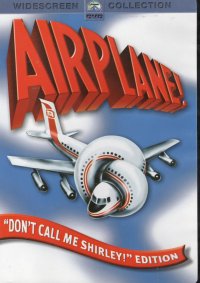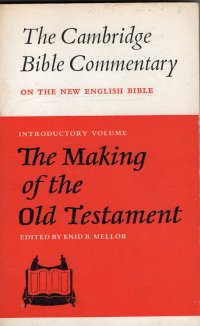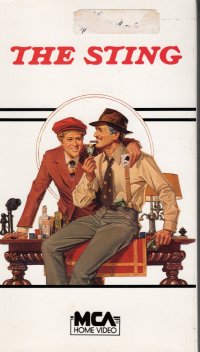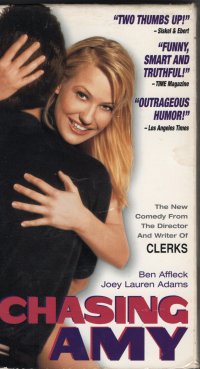 I picked up this book in Wisconsin
I picked up this book in Wisconsin last year in 2022. One would have thought I would have picked it up before now, but it was lying atop books double-stacked on a shelf and pushed back. I am pretty sure it resurfaced when I pulled out the books on Brett Favre and Danica Patrick which were in a similar position (if not actually stacked with this book).
The book is a product of its time: Nick at Nite was hitting its peak, perhaps as older people retreated from the encrassinating sitcoms of the 1990s. The author made appearances on the network starting in 1992 with “Why We Watch” segments and appears on the Bob and Tom Show. But he appears to be a real therapist and his Web site has material on other subjects. So make of it what you will. But one could not as easily find common cultural representations in television after that era as the explosion in cable (which made Nick at Nite possible) led to a diffusion and fragmenting (try not to imagine both metaphors at once, gentle reader, as it might cause you to need therapy) of characters and television shows so you might talk about Blossom and someone who watched Sister, Sister might not understand (although I pulled those examples of 1990s sitcoms out of the air and didn’t look it up, so it’s entirely possible that they aired consecutively on the same network, immediately demolishing the point I was trying to make, but you’ve probably learned by now that I write these book reports quickly, on-the-fly mostly, and sometimes a week or more after I read the book, but you’re not here for deep insight into the book, but my asides and parentheticals, ainna? Hello? Hello?). Friends aside, what might remain a touchstone for current and preceding generations? Come to think of it, are current generations watching television at all? So, yeah, not a book that would be written in 2013 much less 2023.
Amazon reviewers aren’t sure whether to take the book seriously or not, and I can see why. The book has a light tone to it, as it is a pop culture book, but it has just enough actual therapy-style talk to make you wonder if maybe it’s serious (the classification on the back cover is HUMOR/TELEVISION, so probably not too much). Its chapters include “Television and Self-Esteem: Herman Munster or Mary Richards”, “Television and Codependence: Lassie’s Disturbed Unconscious”, and “Television and Dysfunction: We Are All Jethro” (to name a few, that is, the first three past the introduction). Each describes some personal problems and then riffs a bit on them, framing them in the terms of shows that would appear on Nick at Nite (they probably extend whatever bits he might have done on the network). My boys are unlikely to know who Mary Richards and Jethro are. They might know Lassie. And although they probably do not know who Herman Munster is, they can sing Rob Zombie’s “Dragula.” But Rob Zombie, too, is an old man.
So I can see how the metaphors of the different characters might be useful in some sort of Jungian analysis, perhaps, as the myths and stories we tell ourselves or to which we gravitate reinforce the internal stories we live by. Which is how the book can look serious. But it constantly refers to tele-therapy institutes, papers, and research studies with outlandish addresses or locations to underscore that this is not to be taken seriously, and certainly people who cite these papers should not be made presidents of prestigious universities.
It’s not Make Room for TV (which I read 20 years ago–how long have I been doing this?)–but that’s good, as that serious scholarship was a slog. This book, though, carries the joke of teletherapy, the gag which probably worked in short doses on television and on the radio, too long. But it was built to capitalize on that one gag at that one moment in time, and it must have, since I am at least the third owner of this book as it appears to have two separate used bookstore prices inside the front cover–I presume someone bought it at full price and then turned it in for store credit–although the first sticker is for Half Price Books which today is a chain handling unsold leftovers from first-run book stores, so perhaps this copy was never sold at full price.
At any rate, I am enjoying idle speculation on the provenance of this book as well as nostalgia/speculation on the time when it was published than reading the book itself. So take that as you will.



 Well, after I read
Well, after I read  I picked this book up from the free book cart at church; it has the name of our former pastor’s father in it, which probably means that this book has made it through two trips through the seminary before coming to rest on my read shelves. I picked the book up and started reading it before a service where my beautiful wife was early to warm up either her horn or her pipes, and it (the book, not her horn) never landed on my to-read shelves. Although it did take me a while to go through it as it was lost in the car or a bag for a couple of weeks, and later I left it at a different campus of the church after arriving early so my wife could practice with the choir before a cantata, and I stuck it under my chair (the newer campus does not have pews) and forgot it after the cantata. So that’s a nice story. Have you noticed I’ve stopped stuttering?
I picked this book up from the free book cart at church; it has the name of our former pastor’s father in it, which probably means that this book has made it through two trips through the seminary before coming to rest on my read shelves. I picked the book up and started reading it before a service where my beautiful wife was early to warm up either her horn or her pipes, and it (the book, not her horn) never landed on my to-read shelves. Although it did take me a while to go through it as it was lost in the car or a bag for a couple of weeks, and later I left it at a different campus of the church after arriving early so my wife could practice with the choir before a cantata, and I stuck it under my chair (the newer campus does not have pews) and forgot it after the cantata. So that’s a nice story. Have you noticed I’ve stopped stuttering? I picked up this book in Wisconsin
I picked up this book in Wisconsin  This film came out the year after I was born, but I was aware of it and of the presence of “The Entertainer” by Scott Joplin in it (I eventually learned it) and because I had a Cracked magazine parody of it at one time, which must have somehow meant I obtained an older copy of the magazine or that they were still parodying the film in the early 1980s when I would have been buying Cracked magazine at the little drug store next to the neighborhood grocery store. A neighborhood grocery store? How old am I? In one of my local newspapers, I read about a woman retiring from the local grocer after forty-three years, and she talked about having to memorize sale prices in the paper because they didn’t have scanners. You know, I came to work in a grocery store, a small almost neighborhood grocery store, in 1990, and we were just at the tail end of the scanners–we still had price sticker guns in the produce department for some applications–which means, mein Gott, I am getting old, and I can only tell you of the way things were in the last century. Younger people will hear, but not understand.
This film came out the year after I was born, but I was aware of it and of the presence of “The Entertainer” by Scott Joplin in it (I eventually learned it) and because I had a Cracked magazine parody of it at one time, which must have somehow meant I obtained an older copy of the magazine or that they were still parodying the film in the early 1980s when I would have been buying Cracked magazine at the little drug store next to the neighborhood grocery store. A neighborhood grocery store? How old am I? In one of my local newspapers, I read about a woman retiring from the local grocer after forty-three years, and she talked about having to memorize sale prices in the paper because they didn’t have scanners. You know, I came to work in a grocery store, a small almost neighborhood grocery store, in 1990, and we were just at the tail end of the scanners–we still had price sticker guns in the produce department for some applications–which means, mein Gott, I am getting old, and I can only tell you of the way things were in the last century. Younger people will hear, but not understand. It took me three nights to get through this film which I have seen before and think might be Kevin Smith’s best film. I popped it in on an evening where my resolve to watch a film was wavery, and I only got a couple of minutes into it before deciding I wanted to do something else. The next night, I watched another couple of minutes of it before thinking that some of the sexual talk was a little more frank than I’d like my boys to see if they passed through the room while I was watching it. But on the third try, I gutted through and watched the whole thing. And I still think it’s Kevin Smith’s best film, or perhaps it’s the one that spoke and speaks most to me. But I guess we’ll get to that by and by.
It took me three nights to get through this film which I have seen before and think might be Kevin Smith’s best film. I popped it in on an evening where my resolve to watch a film was wavery, and I only got a couple of minutes into it before deciding I wanted to do something else. The next night, I watched another couple of minutes of it before thinking that some of the sexual talk was a little more frank than I’d like my boys to see if they passed through the room while I was watching it. But on the third try, I gutted through and watched the whole thing. And I still think it’s Kevin Smith’s best film, or perhaps it’s the one that spoke and speaks most to me. But I guess we’ll get to that by and by.